#Seed Dispersal
Explore tagged Tumblr posts
Text
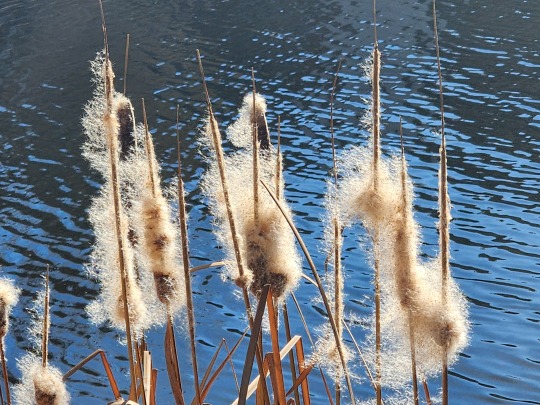
The soft, feathery cattails gently sway above the shimmering waters, their seeds catching the light as they prepare to float away and bring life to new shores. A quiet moment of nature’s beauty and resilience captured by the water’s edge, this scene reminds us of the delicate cycles that shape our world.
#Nature#Wetlands#Cattails#Riparian Zone#Seed Dispersal#Water Photography#Nature Closeup#Urban Wildlife#Reeds and Marshes#MissedMileMarkers
91 notes
·
View notes
Text
¿Por qué seré tan distraída?
Puede ser que la razón se deba a que soy una viajera en el tiempo. Nunca estoy en el presente, siempre en el pasado del por qué y en el futuro del qué sucederá. Vivo en la orilla de la pendiente del estar aquí o dar la vuelta y continuar con mi viaje de búsqueda de algún bucle temporal en el que por fin me sienta feliz, sin cadenas invisibles, sin tantas responsabilidades porque mi cabeza ya no da para más.
Corro el riesgo de que algún día mi pasado sea tan pesado que me haga perder el equilibrio y así resbalar para caer en el no querer hacer nada nunca jamás.
Estoy en todo, menos aquí.
#seed dispersal#frases sad#sadgirl#escritos#nostalgia#writers on tumblr#cosas de la vida#pensamientos#textos#caos emocional#cosas que escribo#humanity#depresión#ansiedad#oscuridad#caida#vida#muerte#cansancio#odio#me odio#cosas tristes#tristeza#estupidez#mente depresiva#mente solitaria#cosas de la mente#escritos vacios#vacio emocional#vacio existencial
12 notes
·
View notes
Text
Tea Time: Fireweed
lf you’ve seen one fireweed, you’ve probably seen several. As an early successional species, growing in large numbers across a vast amount of space is kind of its thing. Any disturbance that leaves bare ground in its wake, such as a wildfire or a windstorm, gives fireweed the opportunity to colonize. It grows quickly and spreads via rhizomes, producing thousands of airborne seeds in the process,…
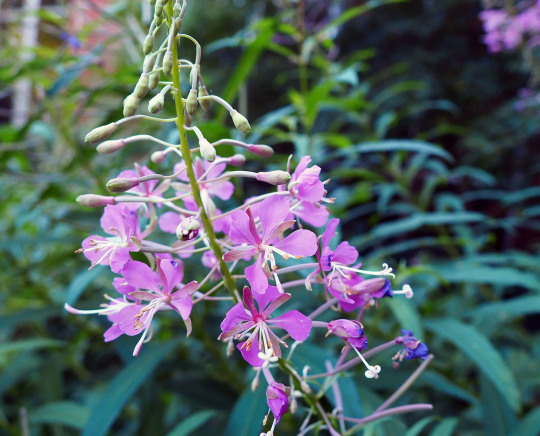
View On WordPress
#Chamerion angustifolium#Dispersal Stories#ecosystem services#ethnobotany#fireweed#flowers#foraging#leaves#native plants#Onagraceae#plant ecology#plant identification#rhizomes#rosebay willowherb#seed dispersal#tea#Tea Time
32 notes
·
View notes
Text

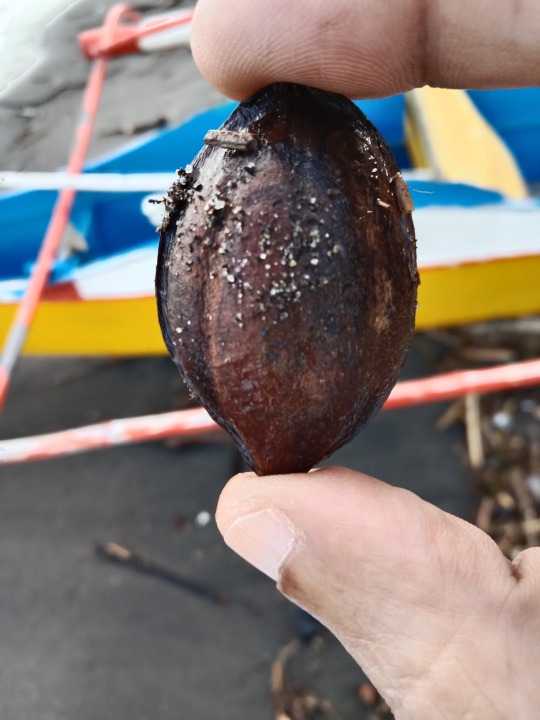
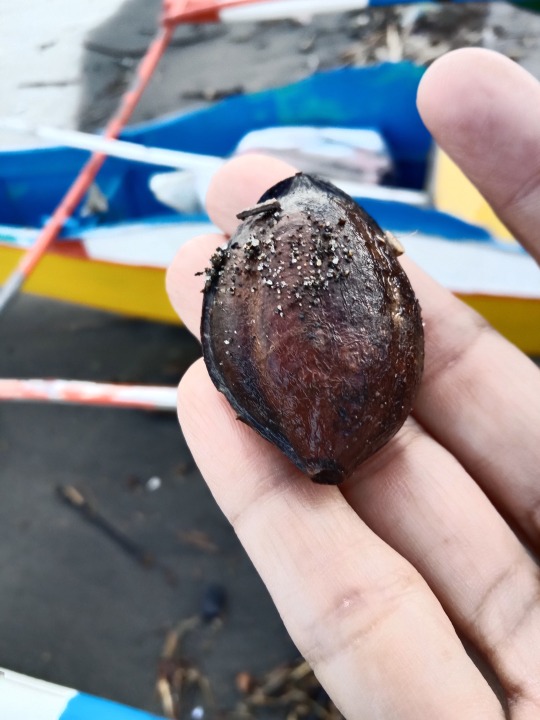

What were abundant on this shoreline, devoid of all molluscan shell debris, let alone of intact seashells, were these elliptical seed pods, presumably buoyant, that help spread the species along the coastline. Huge numbers of them were present here, they ubiquitous on this shore, to the point of being overkill.
A strange seashore indeed, marked by molluscan infertility and botanic fertility!!!!, a similar situation witnessed on a certain sector of the Andhra coastline in India by me, although the norm is that molluscan fertility far exceeds that of any shoreline plant species, seashells everywhere, plant propagative structures few and far between.
Davis Beach, near Digos City, Mindanao, The Philippines. January, 2024.
#digos city#mindanao#plant ecology#seashore#seed pod#beach#seed dispersal#buoyancy#dawis beach#philippines#sterility#fertility
2 notes
·
View notes
Text
Official nature post
love when dogs come back to you with seeds stuck to them. lmao get used as dispersal idiot. that’s just what you get for snuffling the grasses
16K notes
·
View notes
Text

#Howler monkey#Alouatta#primate#New World monkey#tropical forests#Central America#South America#loud calls#vocalization#territorial defense#rainforest#canopy#prehensile tail#folivore#frugivore#seed dispersal#group living#social behavior#nocturnal calls#deep roars#guttural sounds#black howler#red howler#mantled howler#Amazon howler#endangered species#habitat destruction#wildlife conservation#biodiversity#ecosystem role
0 notes
Video
burdock by Francois Flibotte Via Flickr: A detailed close-up captures the vibrant green burdock buds, their spiky texture highlighted against a soft-focus background. Tiny hooks can be seen at the tips of the bud's spines, ready to attach to passing animals for seed dispersal. An insect is also visible, exploring the surface of one of the buds.
0 notes
Text
One of my earlier experiments with macro photography. I ought to do some more, but I keep saying 'after the garage is clean enough for a small studio', and then never having the energy to do anything in the garage. Ah, well. One of these years.

Dandelion photo by Xer S. Rowan, Creative Commons Attribution license
I'm a disabled hobby photographer taking photos for the love of photography and sharing them under a free-to-use-as-long-as-I-am-properly-credited license. For more information about me, this project, and the license I use, visit linktr.ee/DoingItForTheExposure.
#dandelion#macro photography#flowers#seeds#seed dispersal#photography#plant photography#original photography on tumblr#original photography blog#creative commons photography#free stock images#free photos#creative commons
0 notes
Text
Fire, Heat, and Light Shape the Survival of Seeds in Brazil’s Rocky Ecosystems
Rock outcrops are challenging environments where unique and diverse plant species have evolved. These species have adapted to survive in nutrient poor soils, high temperatures, and limited water availability. But how do they manage to do that? A recent study, published in Annals of Botany, explored the factors influencing seed germination and survival in Brazilian rock outcrop ecosystems, known…
#Campo de altitude#Campo rupestre#canga#featured#germination requirements#inselberg#regeneration niche#seed dispersal#seed dormancy#seed mass#seed viability
0 notes
Text
Bats are not evil after all
We're wrong about bats🦇. They're not bloodthirsty monsters🧌 who won't convert you into vampires 🧛 They're productive for the ecosystem as power pollinators.
#Bats power pollinators#bats#Ecosystem#Bats Pollinators#Ecosystem Heroes#Night Pollination#Bat Conservation#Seed Dispersal#Environmental Benefits#Agave Pollination#Cacti Pollination#Fruit Bats#Nature's Pollinators#Biodiversity#EcoWarriors#Bat Habitat#Sustainable Ecosystems#Bats And Agriculture#Nature Balance#Bat Pollination#Vital For Environment#protect Bats
0 notes
Text
Explaining the Mysteries of Plant Seed Dispersal
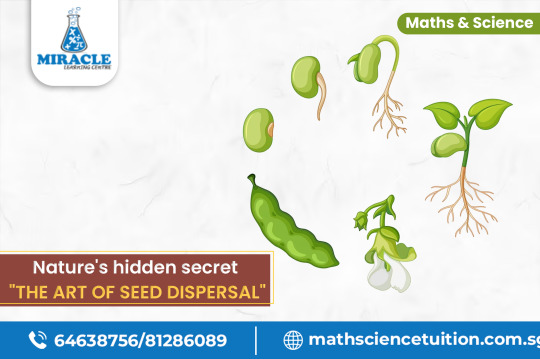
Life's greatest architects are seeds, which are frequently little and modest. They represent the future potential of forests, meadows, and crops. Yet, for these embryonic plants to fulfil their destiny, they must venture far from their parent plant. This is where seed dispersal comes into play, a fundamental ecological process that ensures the survival and proliferation of plant species. In this exploration, we will delve into the intricacies of seed dispersal, its methods, and why it's crucial for the natural world, shedding light on how science tuition can illuminate this captivating facet of our environment.
Before we embark on the journey of seed dispersal, it's essential to understand what a seed is.
What is Seed?
In botanical terms, a seed is nature's encapsulated promise, a tiny vessel of life that holds within it the blueprint for a new plant. At its core, a seed is a fertilized ovule that harbors the embryonic plant, safeguarded within a protective outer layer known as the seed coat. Within this unassuming structure lies the genetic code that guides the growth and eventual reproduction of a plant. A seed, in essence, is the embodiment of life's continuity and resilience, encapsulated in a small, unassuming package.
What is Seed Dispersal?
Seed dispersal is the process by which seeds are transported away from their parent plant to new locations. This separation is vital for a plant's survival as it reduces competition for resources with its parent and enhances the chances of germination and growth. Nature has devised ingenious ways to disperse seeds, ensuring their widespread distribution.
Importance of Seed Dispersal:
The significance of seed dispersal extends far beyond the individual plant. It plays a pivotal role in maintaining biodiversity and ecosystem health. Here's why seed dispersal is crucial:
Biodiversity: Seed dispersal fosters genetic diversity within plant populations. This diversity helps plants adapt to changing environmental conditions, such as climate shifts or emerging diseases, ensuring their long-term survival.
Ecosystem Functioning: Many animals rely on fruits and seeds as a food source. Seed dispersal by animals maintains a balanced ecosystem by ensuring that plants can regenerate and provide sustenance to herbivores.
Plant Colonization: Seed dispersal allows plants to colonize new areas. This is particularly important after disturbances like wildfires or landslides when plants need to decolonize the affected regions.
Now, let's explore the various methods of seed dispersal.
Methods of Seed Dispersal:
The diverse and ingenious methods of seed dispersal are a testament to nature's adaptability. These mechanisms have evolved over millennia to ensure the survival and proliferation of plant species across the globe:
Wind:
Wind dispersal is a prevalent method employed by plants with lightweight seeds. Remarkably adapted for this mode of dispersal, seeds such as those of dandelions and maple trees are equipped with structures like parachutes or wings. When released, they catch the wind and travel remarkable distances, enabling them to settle in new and often distant locations.
Water:
Aquatic plants employ water as a highly effective dispersal agent. Seeds of these plants can float on the water's surface, embarking on aquatic journeys that can take them far from their parent plants. Coconuts are a classic example, renowned for their ability to float and disperse via ocean currents, sometimes washing up on distant shores.
Gravity:
The simplest method, gravity dispersal, sees seeds dropping to the ground below the parent plant. This mechanism is especially suited to larger, heavier seeds, like acorns. While it keeps seeds relatively close to their parent, it reduces the competition for resources within the same vicinity, promoting healthy plant growth.
Animal and Bird:
Many plants have formed partnerships with animals and birds to aid in seed dispersal. Fruits and seeds often serve as enticing food sources, and animals unknowingly become couriers as seeds pass through their digestive systems, later deposited in new locations through their feces. Some seeds, like those of burdock, feature hooks or barbs that cling to animal fur, facilitating transportation.
Explosions:
A fascinating mechanism employed by certain plants involves explosive seed dispersal. These plants have evolved pods or structures that burst open when touched or triggered, forcefully ejecting seeds in multiple directions. The touch-me-not plant is a prime example, demonstrating this explosive method to disperse its seeds.
Fire:
In fire-prone ecosystems, some plants have adapted to harness the power of wildfires. They produce seeds that are heat-resistant, ensuring their survival amidst the flames. After a fire, these seeds find fertile ground in the newly cleared and nutrient-rich soil, contributing to post-fire ecosystem recovery.
These diverse methods of seed dispersal highlight the remarkable adaptations that plants have developed to ensure their offspring's journey to new horizons. Each method is a testament to nature's intricate and often ingenious ways of perpetuating life.
The Roles of Science Tuition to Learn More about Seeds and Plants:
Understanding seed dispersal is integral to comprehending the life cycle of plants. This natural process ensures the continuation of plant species, fostering biodiversity and ecosystem health. To grasp the significance of seed dispersal, students must first delve into the intricacies of a plant's life cycle. Science tuition is the first way to grasping this essential knowledge.
In Singapore, Science tuition plays a pivotal role in nurturing students' understanding these biological concepts. These programs equip students with the knowledge and critical thinking skills necessary to appreciate the importance of seed dispersal within a plant's life cycle. One exemplary institution is the Miracle Learning Centre, a renowned Science tuition centre in Singapore. They take a hands-on approach to teaching, making complex topics like seed dispersal accessible and engaging for students. Through innovative teaching methods and interactive lessons, Miracle Learning Centre ensures that students not only understand the science behind seed dispersal but also appreciate its real-world ecological significance.
Conclusion:
In conclusion, seed dispersal, a seemingly simple process, is vital for the survival of countless plant species and the overall health of ecosystems. It's a testament to nature's ingenuity, with various methods ensuring that seeds reach new territories. Understanding these mechanisms is not only a fascinating journey into the natural world but also a critical step in preserving the biodiversity and functionality of our planet. Through science tuition and continued research, we can unlock the secrets of seed dispersal. To delve deeper into this captivating subject, consider exploring the resources offered by Miracle Learning Centre. To know more about this, visit their website and embark on a remarkable educational journey.
0 notes
Note
The TAGS though!

Plants are so amazing.
I bought a 30 year old car and drove it cross-country back home. The other day I was taking some of it apart to work on it, and all manner of seeds and other flora that are not indigenous to my region came tumbling out. There was Spanish moss so old it turned to dust when I touched it. This plant matter traveled 3 decades and 2,000 miles to be here with me. How about that huh
this is also modern megafauna dispersal. seeds will be like oh man im so ready to fall off, i have so much food and water saved, if only a very strong and fast creature beyond my comprehension would carry me 2000 miles to a soil patch that looks like this one but different. nothing has changed
2K notes
·
View notes
Text
Prompt 191
So. Apparently immortality does in fact exist. And is apparently very easily accidentally achieved, if the fact an entire city has it now.
The GIW will be waiting a very long time to be able to drop that ghost shield, because the city doesn’t seem to be dying out anytime soon. Or at all actually. It’s been several generations now.
They might need to request assistance. Maybe before others start to investigate now that vigilantes are becoming a semi-common thing.
#dcxdp#dpxdc#prompts#The ghost shield made it where the ecto wasn’t able to disperse as it came out of the portal & filled the city#Everyone became too ecto contaminated to be able to exit#And just… stopped being able to die permanently or by old age#They’re not exactly humans nor ghosts but something in-between#Aka Liminal as fuck#Technically everyone counts as a meta or alien#They sure aren’t human anymore & all remember the shit the GIW and government have pulled#They’ve opened up trading with the Realms a while ago#They give them living world things that help with obsessions & get seeds or whatever supplies in exchange#Along with training#They all give off necromancing fae vibes#Liminal Amity Park#Danny is Not ghost king
2K notes
·
View notes
Text

Dude, careful, you're standing on poison ivy!
White-breasted Nuthatch (Sitta carolinensis)
Feb 27, 2024
Southeastern Pennsylvania
#Birds don't react to poison ivy like humans do#In fact they are the main dispersers of poison ivy seeds when they eat the berries#bird#photographers on tumblr#birds#white breasted nuthatch#nuthatches#Sitta carolinensis#birdblr#birb#birbs#ornithology#birblr#nature#animals#wildlife photography
399 notes
·
View notes
Text
love finding a new pretty flower when I'm out and taking some seeds. fucking superb you funky little angiosperm, you're coming home with me
22 notes
·
View notes
Text
Something so crazy is that I started this temp job in Texas and they paired me with a random coworker to live with for like 2 months. And when we met and were getting to know each other I mentioned that I did my thesis on avian seed dispersal and he was like "NO WAY I did my thesis on secondary seed dispersal!" and I was like "omg. Would you happen to remember citing any papers from Dr. Kwit, he does a lot of secondary seed dispersal" and he said yes and I was like "He was on my committee" LMAO
#such a small world.... i love it#seed dispersal is kind of a niche field anyway so its crazy that we both worked on it#we were talking about other authors too like 'yeah Dr Jordano my friend Dr Jordano' [was on every seed dispersal paper for like 20 years]#jawjackin
75 notes
·
View notes